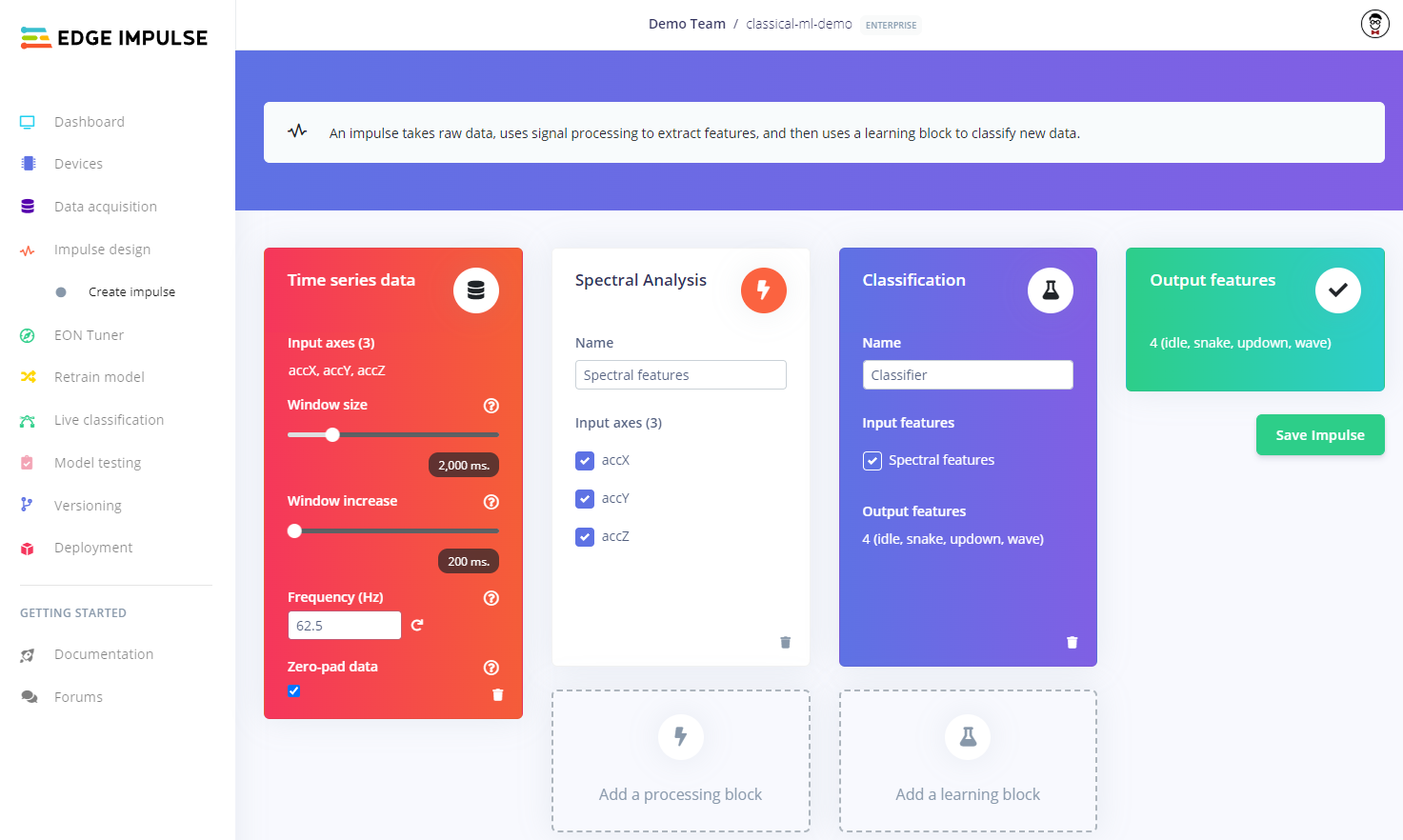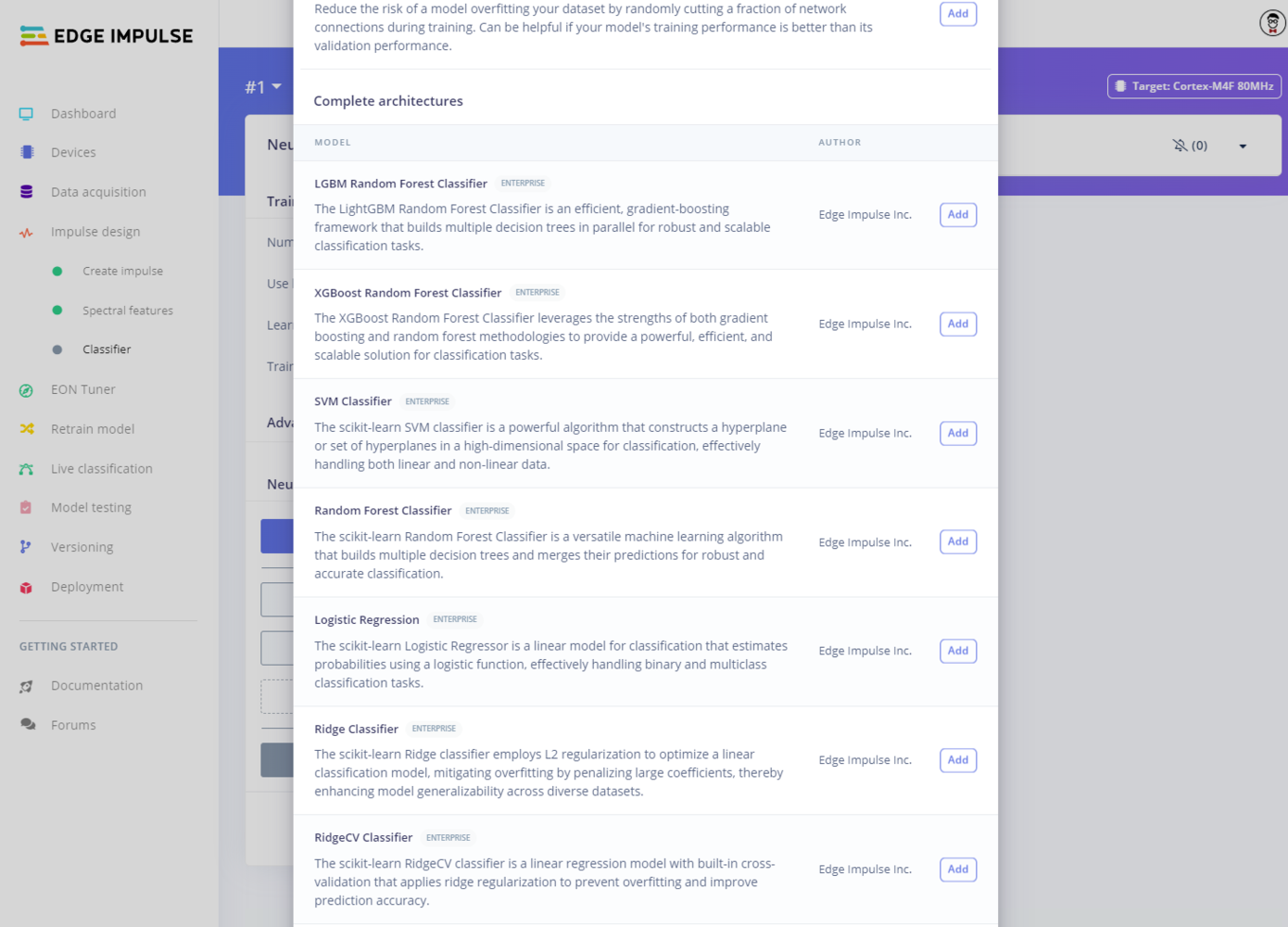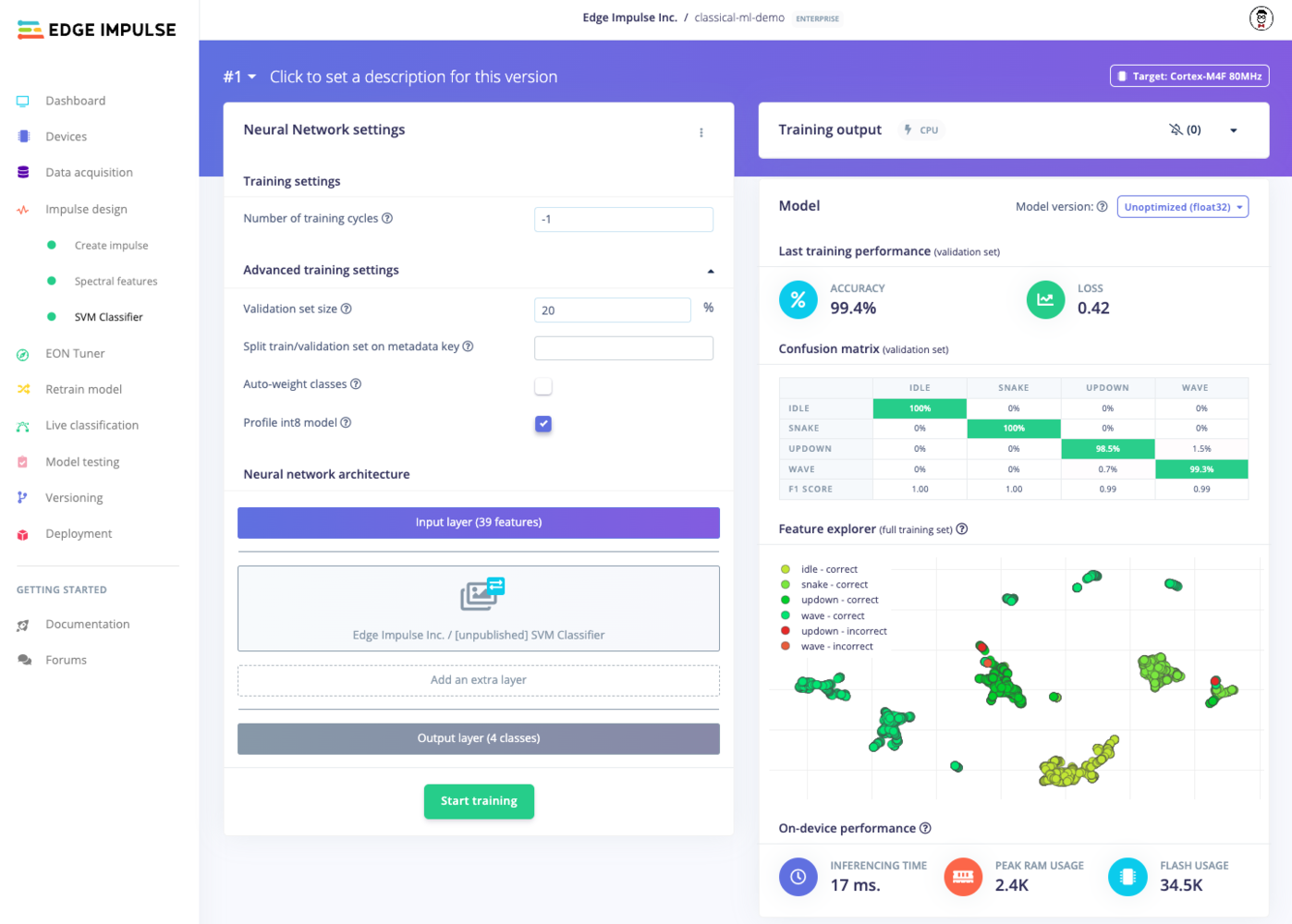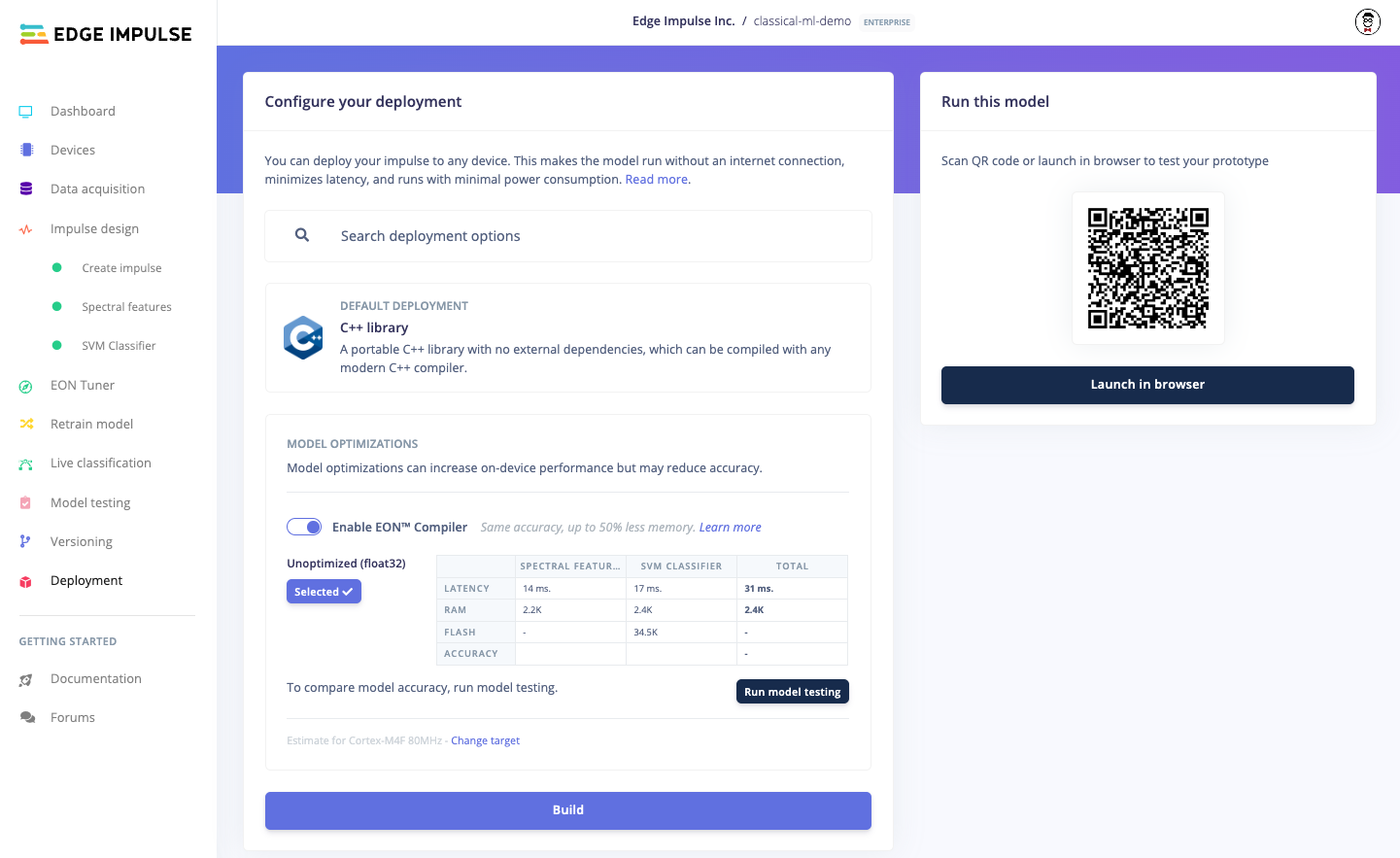Only available on the Enterprise planThis feature is only available on the Enterprise plan. Review our plans and pricing or sign up for our free expert-led trial today.
- Classification is used when you want to identify a sample as belonging to one particular grouping. It requires the number of possible outputs to be a discrete number. For example, classification is used if you want to determine if a picture is of a dog or a cat (2 possible outputs).
- Regression is used to predict a continuous value based on the input data. For example, predicting the price of a house based on location, average neighborhood sell price, etc.
Getting started with classical ML
To start, select the Classification learning block when building your impulse.
Classical ML models are also available for Regression.
Select the classifier learning block
Classical ML models available in Edge Impulse
Training a classical ML model in Edge Impulse
Note that Expert mode is not available for classical ML models.
Training a classical ML model in Edge Impulse
Supported classical ML algorithms
Edge Impulse supports a number of classical algorithms to get you started. If you are unsure of which algorithm to use, we recommend using the EON Tuner to guide you.
Logistic regression for classification
Logistic regression (despite its name) is a classifier; it is used to classify input data into one of several, discrete categories. It works by first fitting a line (or surface) to the data, just like in linear regression. From there, the predicted output (of linear regression) is fed into the sigmoid function to classify the input as belonging to one of several classes.
Logistic regression is simple, fast, and efficient. However, it requires a linear relationship between the input and predicted class probabilities, which means it will not work well on complex data (e.g. non-linear relationships or many input dimensions).
The source code for the logistic regression block can be found in this repository: sklearn-linear-models.
Support vector machine (SVM) for classification
Support vector machines rely on a technique called the “kernel trick” for mapping points in low-dimensional to high-dimensional space. By doing this, groupings of data can often be separated into clearly defined categories.
SVMs make for robust classification systems that work well with high-dimensional data (i.e. a single sample containing many values, such as different sensor values). However, they can struggle if classes in the dataset overlap significantly. If this is the case for your dataset, you may want to turn to neural networks.
An example Edge Impulse project using an SVM can be found here: sklearn SVM Classification.
The source code for the SVM block can be found in this repository: example-custom-ml-block-svm.
Random forest for classification and regression
Random forest is a type of machine learning model that employs multiple decision trees. Random forests are simple to train and offer relatively high accuracy for classical ML approaches.
An example Edge Impulse project using a random forest classifier can be found here: sklearn Random Forest Classification.
The source code for the random forest block can be found in this repository: example-custom-ml-block-sklearn-random-forest.
Extreme gradient boosting (XGBoost) for classification and regression
XGBoost is an open-source implementation of gradient boosting, which is a type of ensemble learning that uses a combination of simpler models, such as decision trees. It works well for classification and regression tasks. Tree-based methods, like XGBoost, compare values only between samples and not between values in a sample. As a result, they work well with features that have different magnitudes and scales.
XGBoost is fast and efficient. It also has built-in methods for handling missing data, and it generally performs better with smaller datasets over LightGBM. However, it does not work as well as neural networks on complex data, and it is prone to overfitting.
An example Edge Impulse project using XGBoost for regression can be found here: XGBoost Random Forest Regression.
The source code for the XGBoost block can be found in this repository: example-custom-ml-block-xgboost.
Light gradient boosting machine (LightGBM) for classification and regression
Similar to XGBoost, LightGBM is another type of gradient-boosted ensemble model often constructed with decision trees, and it works well for both classification and regression tasks. Because it is a tree-based method, LightGBM compares values between samples rather than between features in a sample, thus making it robust when dealing with features that have different magnitudes.
LightGBM is also fast and efficient, but slightly less so than XGBoost, making it a better choice for larger datasets. Like XGBoost, it may not work well with complex data and is prone to overfitting.
An example Edge Impulse project using LightGBM for classification can be found here: LGBM Random Forest Classification.
The source code for the LightGBM block can be found in this repository: example-custom-ml-block-lgbm.
Going Further
If you want to implement your own learning block for Edge Impulse, see the guide here.


